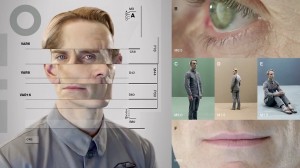4th International Illustration Symposium
Oxford University Museum of Natural History (OUMNH)
Parks Road, Oxford
7-8 November 2013
At this symposium, not only did I hear Johnny Hardstaff deliver a keynote address, which prompted me to request an interview (we talked about imagining a graphic language of the future), but I also delivered a paper. Here’s a summary, and some slides.
“Drawing the Future: Exhibiting Illustration”
In the Spring semester I deliver a series of lectures on the “future” to Graphic Design and Illustration students (Level 5/2nd Year) at University of Brighton, and start with a couple of definitions so as to debunk such notions as, the future isn’t really anything to do with us right now, and, it’s all just science-fiction anyway.
“The ‘Future’ is everything that happens from [beat] now (…as they say in the movies…)” …is my playful opener; then I hit them with Tony Fry’s definition (from Design Futuring: sustainability, ethics and new practice, 2009); “The future is not presented here as an objective reality independent of our existence, but rather, and anthropocentrically, as what divides ‘now’ from our finitude. In other words, we exist in the medium of time as finite beings (individually and as a species) in a finite world; how long we now exist — the event of our being — is determined by either an unexpected cataclysmic event (like our plant being hit by a massive meteorite) or by our finding ways to curb our currently auto-destructive, world-destroying nature and conduct.”
…and that’s how I began this talk too.
I set out to show that perhaps by way of a heightened familiarity with drawn and animated futures peopled with cute and cuddly characters, used to entertain and promote (everything from breakfast cereals to banking services), a more positive, friendly, utopian version of the future is being proliferated. In comparison, the “scary”, sci-fi, dystopia future of apocalyptic blockbuster movies seems worn out; not so much because we can “see the wires”, but because we’ve developed “explosion fatigue”; such gargantuan, special-effects-driven destruction just doesn’t “feel real” anymore.
Continue reading

